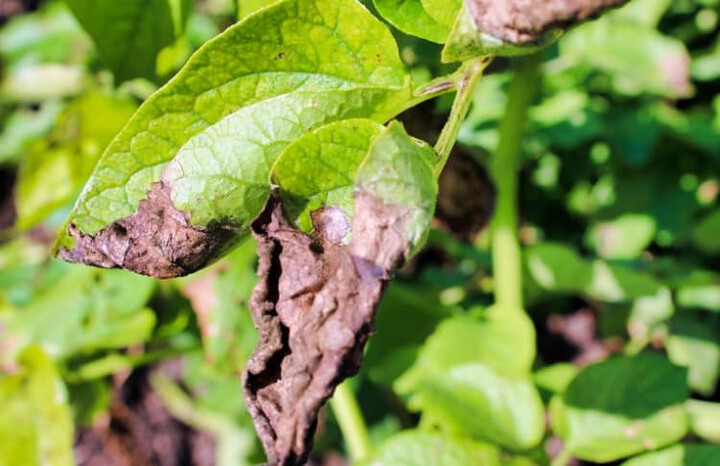Some plants react better to moist soil than others and these are the ones that generally stay clear of getting root rot.
Because this fungus grows in wet conditions, any plant that doesn’t have adequately draining soil or collects a lot of water is more likely to develop it.
Generally speaking, it’s indoor plants that will develop the condition because it’s harder for the soil to dry out or drain correctly in these types of conditions without sunlight.
However, it can affect several plant species, and even those that grow outside:
Strawberries
Boronias
Macadamia
Waratahs
Proteas
Succulents
How To Tell If Your Plants Have Root Rot

One of the biggest issues with root rot is that because it affects this area underneath the soil, you can’t always tell straight away that it has it.
This means, by the time you can see signs of the fungus growing on the leaves and other parts of the plant, it’s already progressed quite far.
The roots of a plant with this condition will usually turn from firm to soft and their color will change to dark brown or black. They’ll be so weak that they can fall off from touch alone, but this can be hard to spot while they’re in the soil. You might notice lesions near the stem of the leaves or closer down towards the soil.
The easiest way to tell if your plant is suffering is to keep an eye on changes with the leaves. When a plant has been infected, you’ll be able to spot the leaves first as they shrink, change color, and wilt or fall off. You might notice the plant growth has slowed down or been stunted, and it can even ooze sap or develop spots on it.
At the terminal stages of root rot, a plant will die completely, and there’ll be no way to bring it back. Before it reaches this level though, you should be able to notice a number of signs that can indicate care needs to be taken, as well as a few preventative measures that can stop it from getting to this stage.
Preventing Root Rot
Like most things in life, the best treatment for root rot is prevention and good care.
No matter the types of plants you have or how plentiful your garden is, you can make some quick changes that will prevent the fungus from growing.
The most powerful deterrent against root rot is a soil that has adequate drainage, so focus first on ensuring this.
Mix your soil with a combination of pebbles, rocks, and matter like granite and sand that allows it to aerate and not become too moist. Use pots that have drainage holes in them and raise garden beds so they drain more efficiently.
How we water our gardens can also impact their moisture levels, and it’s essential not to overwater them. All plants require different things for their frequency of watering, but if you’re dealing with succulents especially, this is usually no more than once a week in warm conditions to prevent root rot.